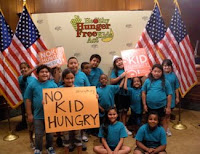 Despite what you may see advertised, there are no miracle foods or vitamins that can help prevent or cure any type of flu. There are, however, plenty of smart things you can do to keep your family as healthy as possible this season.
Despite what you may see advertised, there are no miracle foods or vitamins that can help prevent or cure any type of flu. There are, however, plenty of smart things you can do to keep your family as healthy as possible this season.
Cough like a vampire. According to the Centers for Disease Control and Prevention (CDC), you should cover your mouth and nose with a tissue when you cough or sneeze. Put your used tissue in the waste basket. If you don’t have a tissue, cough or sneeze into your upper sleeve or elbow, not your hands. Children, who rarely carry tissues, can easily be taught to "cough like a vampire" with a cape over their months.
Keep your hands clean. One of the best ways to stay healthy is to wash your hands properly and frequently. This will help protect you from all germs, including seasonal flu and the H1N1 virus. Use soap and warm water - and wash for 15 to 20 seconds. When soap and water are not available, use alcohol-based hand wipes or gel sanitizers.
Drink plenty of fluids. Water is always a refreshing choice. Tea, especially antioxidant-rich green tea, can be a nice way to warm up and stay hydrated anytime. 100% orange or other juice is also good, but don’t overdo it: A small glass a day is plenty. Drinking enough fluids (6 to 8 cups a day) will help keep your mucous membranes moist and able to fight off germs.
Eat plenty of fruits and vegetables. Produce is packed with the nutrients that your immune system needs to fight viruses and bacteria of all types. Go for all types of brightly colored fruits and veggies. They will have more of the disease-fighting antioxidants, like vitamin C and beta-carotene. Fresh, frozen, dried, canned in juice, and 100% juice can all offer health benefits.
Consider a multi-vitamin/mineral supplement. This is the right time of year for a little extra nutrition insurance, a basic vitamin/mineral pill with 100% of the Daily Value (DV) for most nutrients. Although super-expensive supplements with mega-doses are mostly a waste of your money, you may want to look for a supplement with 800 to 1000 IUs of vitamin D. While there is still discussion about the value of D, many experts are recommend more than the DV of 400 IUs for optimal health and well-being.
For more ideas of staying well in flu season, read Beat the Bug on Kids Eat Right.





















